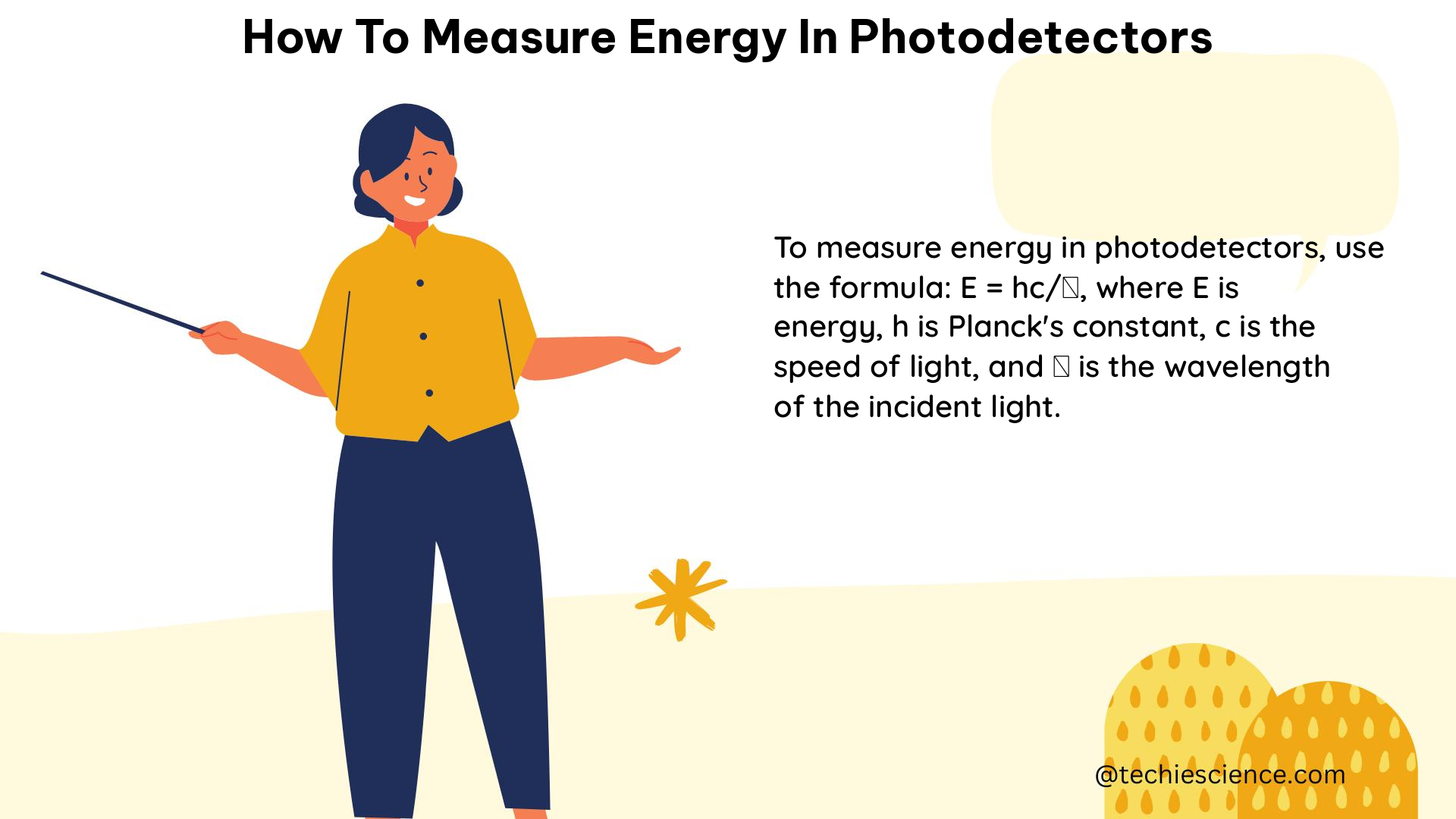Measuring the energy in photodetectors is a crucial aspect of understanding the performance and characteristics of these devices. Photodetectors are widely used in various applications, including optical communication, imaging, and spectroscopy, and their ability to accurately measure the energy of incident photons is essential. In this comprehensive guide, we will explore the fundamental principles, techniques, and tools used to measure the energy in photodetectors.
Understanding Photodetectors
Photodetectors are devices that convert optical signals into electrical signals, enabling the detection and measurement of light. There are two broad categories of photodetectors: those that function based on the photoelectric effect and those that rely on the solid-state properties of semiconductors.
Photoelectric Effect-Based Detectors
In photoelectric effect-based detectors, the incident photons eject electrons from the surface of a material, known as photoelectrons. The kinetic energy of these photoelectrons is given by the equation:
KEelectron = hν - φ
where KEelectron is the kinetic energy of the photoelectron, h is Planck’s constant, ν is the frequency of the incident photons, and φ is the work function of the material. By measuring the kinetic energy of the photoelectrons, the energy of the incident photons can be determined.
Semiconductor-Based Detectors
Semiconductor-based detectors, on the other hand, rely on the excitation of electrons from the valence band to the conduction band of a semiconductor material. This excitation creates electron-hole pairs, which can be collected and measured as an electrical current. The energy of the incident photons can be inferred from the characteristics of the generated current.
Measuring Energy in Photodetectors

To measure the energy in photodetectors, a spectrometer is typically used. A spectrometer is a device that measures the intensity of light as a function of wavelength or frequency.
Spectrometer Components
A spectrometer consists of the following key components:
- Monochromator: The monochromator is a device that disperses the incident light into its component wavelengths or frequencies.
- Detector: The detector is the component that measures the intensity of the light at each wavelength or frequency. Common detectors used in spectrometers include photodiodes, photomultiplier tubes (PMTs), and charge-coupled devices (CCDs).
Measurement Process
The measurement process using a spectrometer involves the following steps:
- The incident light is directed into the spectrometer.
- The monochromator disperses the light into its component wavelengths or frequencies.
- The detector measures the intensity of the light at each wavelength or frequency.
- The measured intensities are recorded and analyzed to determine the energy distribution of the incident light.
Quantum Efficiency
The quantum efficiency (η) of a photodetector is a crucial parameter that describes the detector’s ability to convert incident photons into electrical signals. It is defined as the ratio of the collected photocurrent to the number of incident photons. The quantum efficiency can be measured using a quantum efficiency measurement system, which typically consists of a monochromator, a light source, a detector, and a data acquisition system.
Advanced Techniques and Considerations
In addition to the basic spectrometer-based approach, there are several advanced techniques and considerations for measuring the energy in photodetectors:
Spectral Response Measurement
The spectral response of a photodetector is the measure of its sensitivity to different wavelengths or frequencies of light. This information is crucial for understanding the detector’s performance and can be obtained by measuring the detector’s response to a range of wavelengths or frequencies.
Noise Characterization
Noise is an important factor that can affect the accuracy and sensitivity of photodetector measurements. Techniques such as dark current measurement and noise power spectral density analysis can be used to characterize the noise performance of photodetectors.
Cryogenic Cooling
For certain types of photodetectors, such as infrared detectors, cryogenic cooling can be used to improve their performance by reducing thermal noise and increasing their sensitivity.
Calibration and Standardization
Accurate energy measurements in photodetectors require proper calibration and standardization of the measurement system. This may involve the use of calibrated light sources, reference detectors, and standardized measurement protocols.
Practical Examples and Applications
Photodetectors are used in a wide range of applications, each with its own unique energy measurement requirements. Here are a few examples:
Optical Communication
In optical communication systems, photodetectors are used to convert the optical signals into electrical signals for further processing. Accurate energy measurement is crucial for ensuring the reliability and performance of these systems.
Spectroscopy
Photodetectors are widely used in spectroscopic applications, where the energy of the incident photons is used to identify and quantify the composition of materials.
Imaging
Photodetectors, such as CCD and CMOS image sensors, are the core components of digital imaging systems. Accurate energy measurement is essential for capturing high-quality images and enabling advanced image processing techniques.
Conclusion
Measuring the energy in photodetectors is a fundamental aspect of understanding and characterizing these devices. By mastering the techniques and considerations outlined in this guide, you can gain a deeper understanding of photodetector performance and unlock their full potential in a wide range of applications.
References
- Bissaldi, E., Fiorini, C., & Uliyanov, A. (2023). Photodetectors for Gamma-Ray Astronomy. In: Bambi, C., & Santangelo, A. (eds) Handbook of X-ray and Gamma-ray Astrophysics. Springer, Singapore. https://doi.org/10.1007/978-981-16-4544-0_49-1
- Detectors – Chemistry LibreTexts. (2023). Retrieved from https://chem.libretexts.org/Bookshelves/Analytical_Chemistry/Supplemental_Modules_(Analytical_Chemistry)/Instrumentation_and_Analysis/Spectrometer/Detectors/Detectors
- Observables and Measurements in Quantum Mechanics. (2009). Retrieved from http://physics.mq.edu.au/~jcresser/Phys301/Chapters/Chapter13.pdf
- Quantum efficiency measurement system for large area CsI photodetectors. (2013). Request PDF.
- Photodetectors. (2016). Quantum Efficiency – an overview | ScienceDirect Topics. Retrieved from https://www.sciencedirect.com/topics/engineering/quantum-efficiency

The lambdageeks.com Core SME Team is a group of experienced subject matter experts from diverse scientific and technical fields including Physics, Chemistry, Technology,Electronics & Electrical Engineering, Automotive, Mechanical Engineering. Our team collaborates to create high-quality, well-researched articles on a wide range of science and technology topics for the lambdageeks.com website.
All Our Senior SME are having more than 7 Years of experience in the respective fields . They are either Working Industry Professionals or assocaited With different Universities. Refer Our Authors Page to get to know About our Core SMEs.